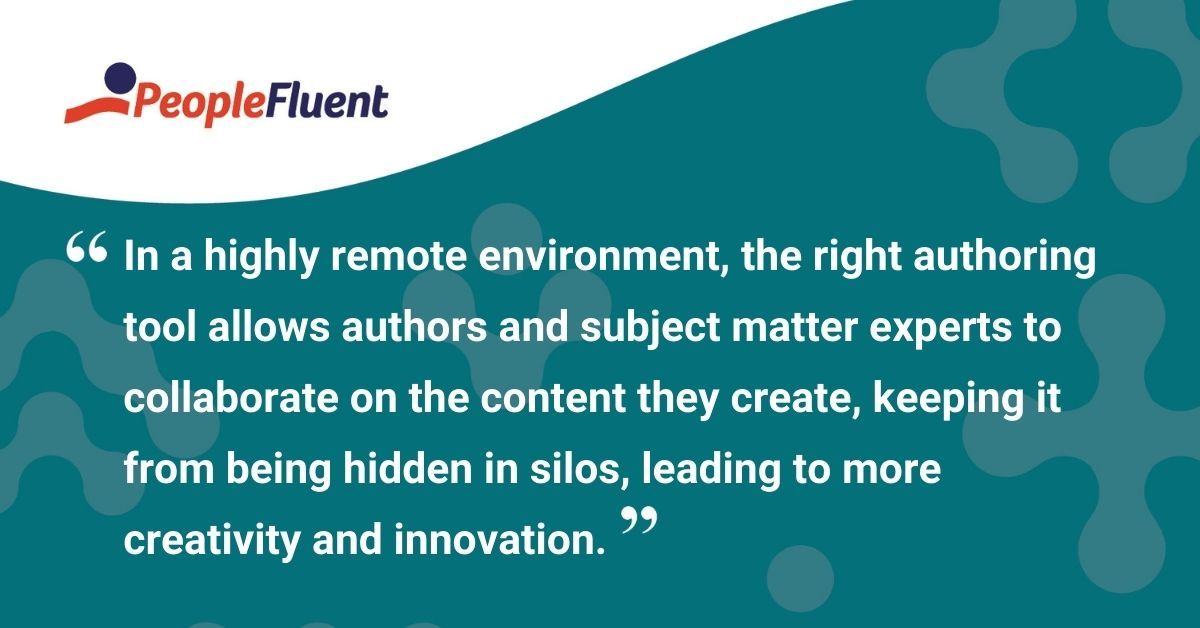Published: Jun 28, 2021Time to read: 5mins Category: Learning
Authoring Tools: Enhancing Your Learning Technology Ecosystem
A learning management system without great digital learning content is like a fountain without water: empty and incapable of quenching your thirst for knowledge. But with more content choices than ever before, how do you decide if you should go off-the-shelf, outsource to a custom eLearning provider, or get an eLearning authoring tool and create your own content in-house? Or a combination of these? In this article, David Wentworth, Principal Analyst at Brandon Hall Group, looks at the current content authoring trends.
Amid the current attention on improving the learner experience, many organizations find themselves at the helm of a broad and diverse array of learning technologies. There are LMSs, LXPs, microlearning tools, video platforms and countless others. However, the learner experience ultimately depends on one thing: the content!
But many companies find themselves at the mercy of off-the-shelf content from third-party providers. Though it can save time since the material is ready to go on Day One, many companies find that this content falls short of aligning with their unique vision, culture, and messaging. Providing a personalized learning experience with off-the-shelf content is difficult (to say the least) and more than half of companies cite an inability to find the right content in the marketplace as a challenge to delivering personalized learning at scale.
As the move to a more modern, personalized, flow-of-work learning experience continues, companies will need more autonomy and input on their learning content. Among the top 10 learning priorities for achieving business goals are some very content-specific needs:
- Increasing microlearning
- Revising existing content for new modalities
- Creating smaller content objects
- Leveraging simulations
- Incorporating mobile delivery
- Increasing learner-contributed content
Because of this, we see an increase in companies creating their own content. Yes, there are countless libraries of off-the-shelf learning content to choose from…
But most organizations want content with a specific look and feel.

YOU MIGHT ALSO LIKE | ‘3 Reasons Why Microlearning Should Be an Essential Part of Your Learning Strategy’
Custom eLearning vs In-House Authoring
So how do they get it? They could look to an outside custom eLearning provider—and many do. This isn’t really a sustainable solution and can become expensive when leveraged across multiple learning programs. And while the company has more input on custom content, it’s still not directly created by the organization’s own experts.
Many are seeking a solution that’s a bit more under their control.
Let’s look at the other end of the spectrum. Many learning delivery platforms today come with built-in authoring capabilities.
The good news is that subject matter experts and other creators can quickly create their own material. The bad news is that the content is not of the caliber of the third-party content. These drag-and-drop tools produce relatively one-dimensional content that may not include elements that drive engagement, retention, and impact.
MORE FROM THE BLOG | ‘Learning From Each Other: How Learning Design Can Benefit Talent Paths’
Benefits of an Authoring Tool
The linchpin technology for the learner experience is a dedicated eLearning authoring tool.
Currently, about 56% of companies say they have an authoring tool as part of their learning technology ecosystem, according to Brandon Hall Group’s L&D Benchmarking Study. This gives the organization total autonomy over how the content is created, how it looks, how it behaves and ultimately, how effective it is. This is critical since the content is the experience.
But it goes deeper than that.
Bringing an authoring tool into the technology ecosystem means the company can easily integrate its content into the learning environment, no matter what it is. If the company has one LMS or ten, they can be certain their authored content will work in any of them.
The same goes for any other delivery platform. Control over the creation of the content allows the company to develop exactly what is needed for a specific program. Additionally, in a highly remote environment, the right authoring tool allows authors and subject matter experts to collaborate on the content they create, keeping it from being hidden in silos, leading to more creativity and innovation.

HANDPICKED FOR YOU | ‘3 Ways to Simplify Your Thinking Around Learning Ecosystems’
Democratizing Learning
The right authoring tool will also help democratize learning content within the organization by allowing not only highly trained instructional designers to create content but also subject matter experts who may not have extensive development experience. A tool with the sophistication of cloud-based authoring, with drag-and-drop simplicity, enables everyone to participate in content creation without sacrificing quality.
Far from adding to the complexity of the existing technology ecosystem, the addition of an authoring tool can simplify things:
- It gives L&D another way to ensure learning is truly aligned with the needs of the business.
- It provides more control over the look and feel, creating a consistent experience.
- It offers more seamless integration for moving knowledge from SMEs to learners.
- Autonomy over content creation ensures greater agility when business needs change.
It’s important that companies consider the role content plays in the overall learner experience and how much they need and want to control it. An authoring tool doesn’t have to be a huge, complex addition, either. It’s not difficult to find a feature-rich, yet easy-to-use solution that not only fits well within the ecosystem but can be central to it, too.
KEEP READING | ‘7 eLearning Tools Every L&D Pro Needs’
Discover How an Authoring Tool Can Help You Build Skills and Ensure Compliance
Find out how to improve your learning program with a user-friendly, cloud-based content authoring tool, powered by Gomo.